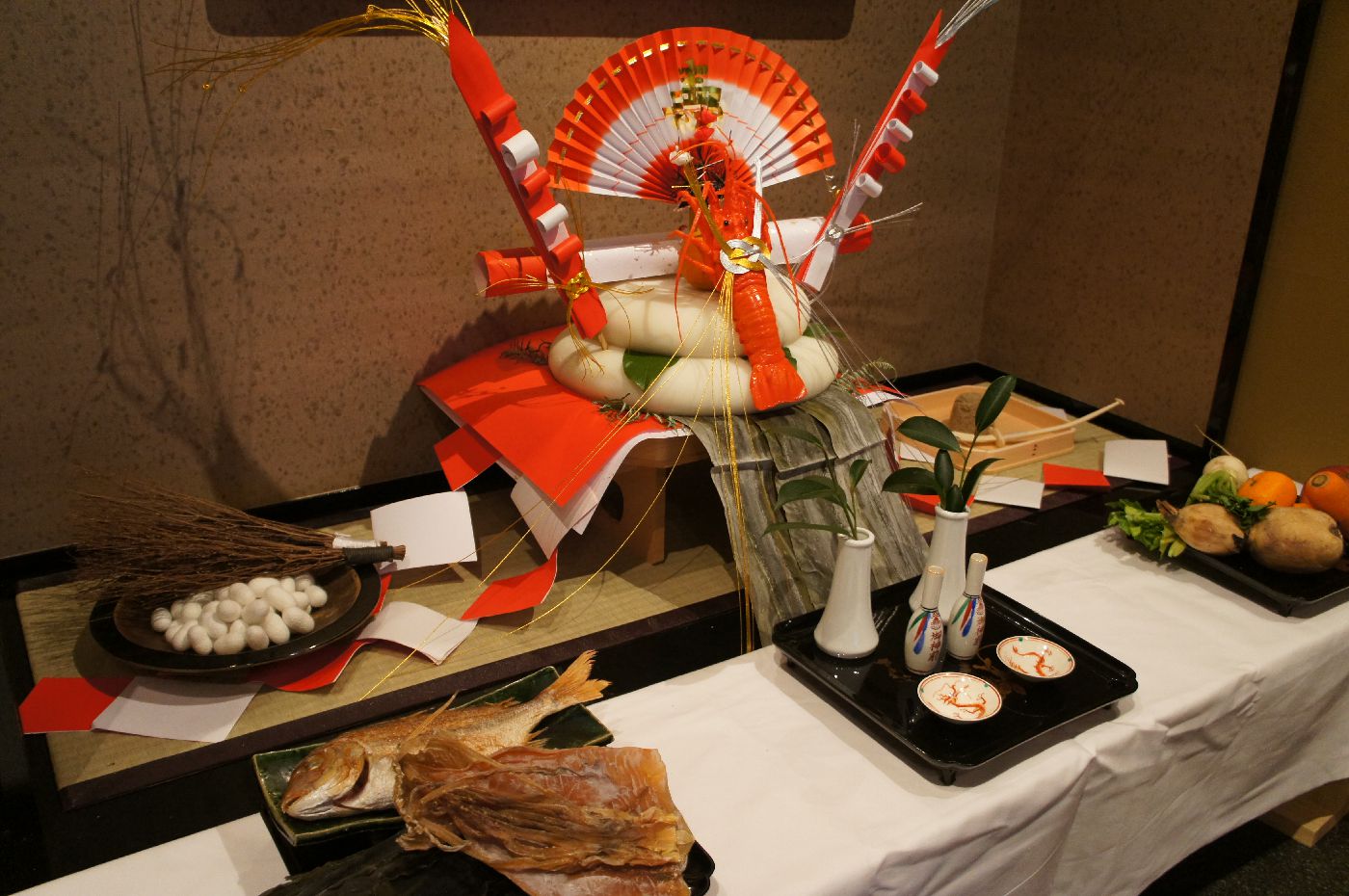The New Year or Shôgatsu, which was included in the Gosekku as Kochôkai 小朝拝, is one of the most important celebration in Japan.
For this very peculiar occasion that a very peculiar set of dishes, the osechi, is prepared with a strong spiritual and religious connections.
Originally, osechi were prepared with seasonal ingredients and needed a long time to be ready before the New Year – as it was forbidden to use hearth for cooking on this very day.
The dishes were reserved for the family or the very close friends and the housewife was finally able to rest. At Gin No Mori, we built our products while keeping in mind the origins and the symbolism of osechi.

The dishes of the New Year were not at the beginning disposed in jûbako. This way of doing came later, as the various dishes did. Only rice and vegetables were used for asking the protection of the kami for the forthcoming year and crops.
Nevertheless, osechi menus are basically composed around the following dishes:
In the Kantô region (Tokyo) the Iwaizakana Sanshu are made of kazu no ko (Pacific herring roe), kuromame (black soy beans generally sweet), and tadzukuri (dried Japanese anchovies with spices). In Kansai region (Osaka), kuromame are replaced by tataki gobô, dish based on the greater burdock, once used in Europe as vegetable.
Symbolism of the dishes above (as added dishes carry also their own meaning):
Gin No Mori main product is then osechi box: you find in one box different traditional dishes and some new ones.
After years of fine tuning our processes, recipes and skills, we are very confident in the taste of our osechi.
Here how we work:
Our production system is like Ford or Toyota : we work with kanban, 5S and simplicty in mind.
Most of the tasks are done by humans:
Processes are designed to get the most of our capacities without lowering quality standards.
Tasty is good, but if it is safe and without waste, it is even better.
Actually, most of them are sold under distributors names through Japan. Some of them are really famous and despite all the years working with us, they are still asking us to craft their osechi
We hope in a near future to bring the osechi concept outside Japan as we know that many gourmets are waiting for it.